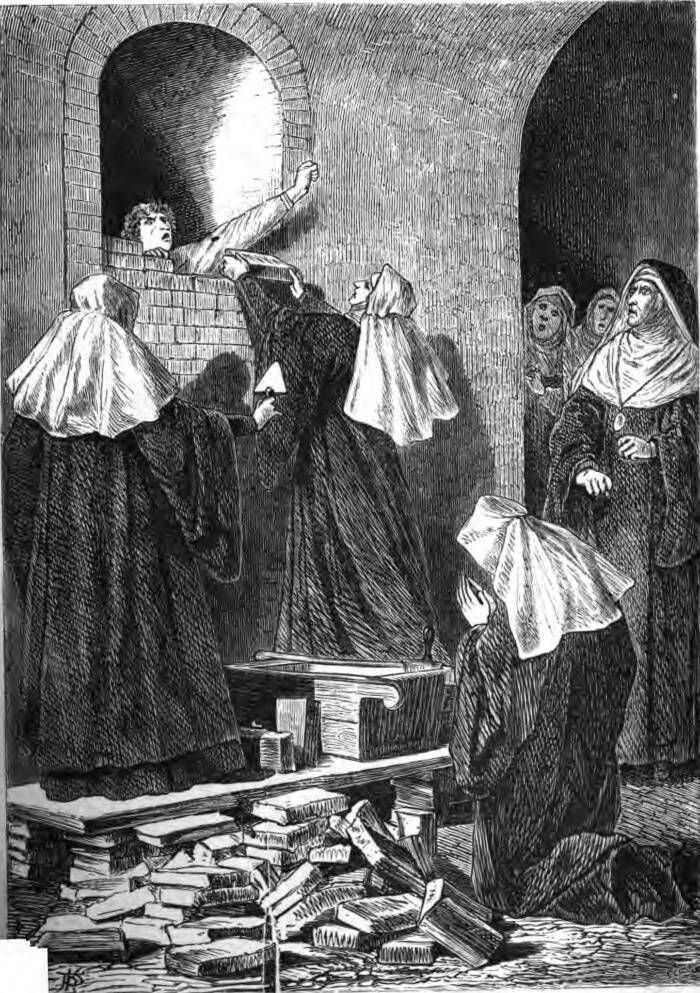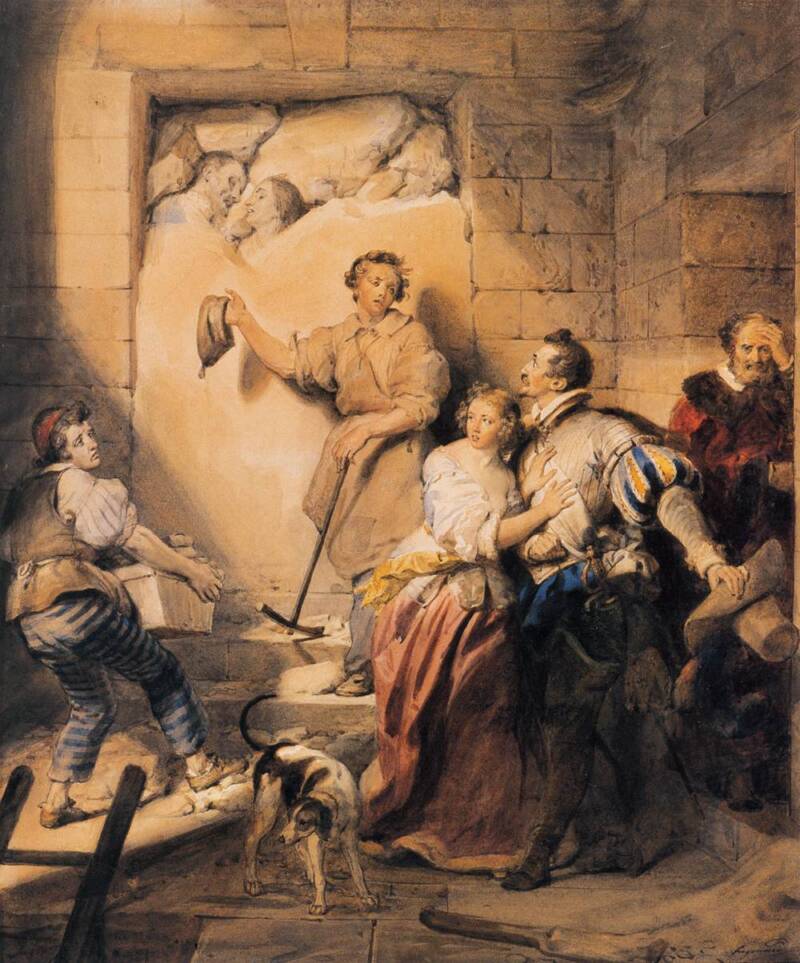Medieval Torture Devices: Inside The Chilling Practice Of “Immurement”

Public DomainA depiction of immurement being used against a nun.
Similar to the oubliette, the next medieval torture device on our list did not involve ropes, sharp objects, or bloodshed. But immurement was still a torturous way to die. It involved entombing someone alive.
This torturous practice actually dates back to Roman times, when it was used against Vestal Virgins who broke their vow of celibacy. Because it was forbidden to spill the blood of a Vestal Virgin, they were often entombed alive in a tiny vault and left to slowly die of starvation.
The chilling torture method was carried into the Middle Ages. Nuns and priests who broke their vows of chastity or expressed heretical ideas were sometimes sealed into a small room. Often, they were given food and allowed to survive in the tiny room, albeit not usually for very long.

Public DomainA 19th-century painting entitled “The Immured.”
Curiously, there may be a potential link between immurement and “London Bridge Is Falling Down.” In the 19th century, an author noted that one version of the rhyme includes the stanza: “Take the key and lock her up/Lock her up, Lock her up/Take the key and lock her up/My fair lady.”
The author suggested that this stanza hints at the immurement of someone to “bless” the London Bridge and ensure that it would never collapse. However, there is no strong evidence that this actually happened.
In any case, immurement was practiced across different times and different cultures. As a medieval torture device, it was an efficient way to drive someone mad, just like the infamous oubliette.





